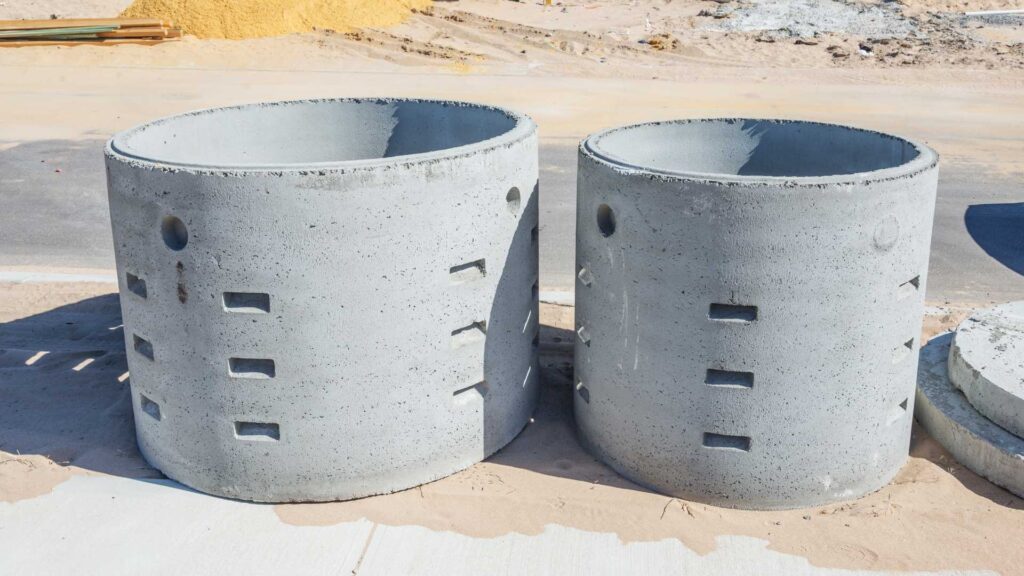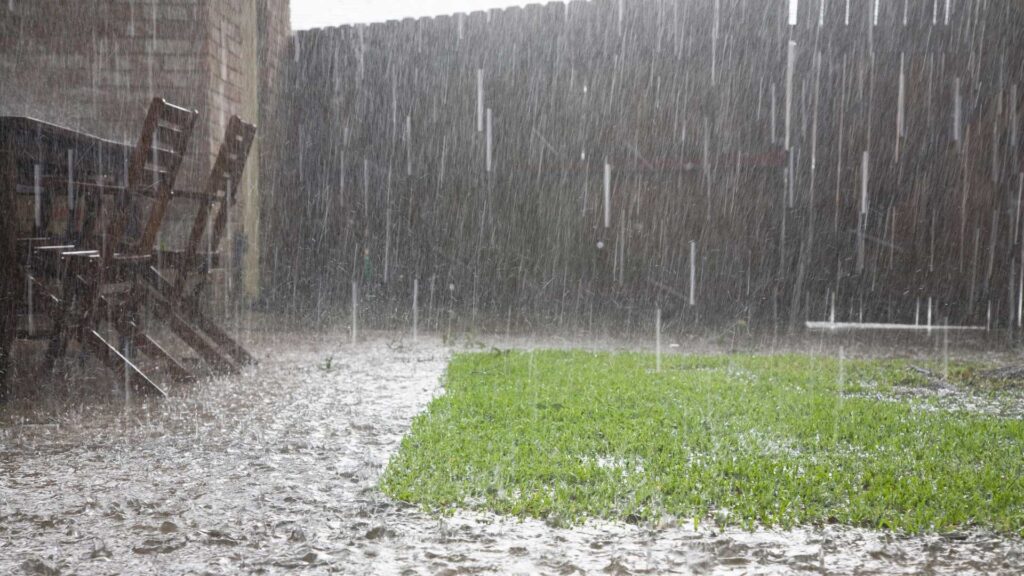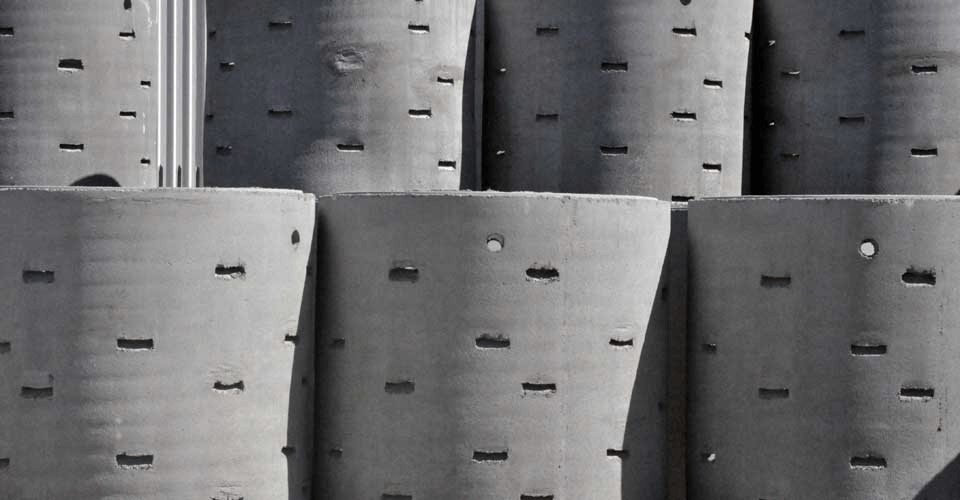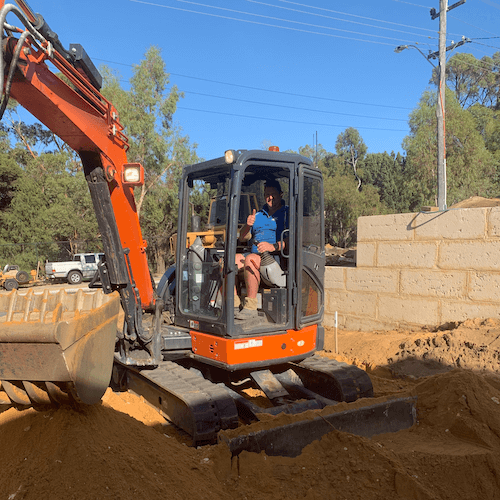Soakwells are essential for handling stormwater on your land. They successfully channel extra water and prevent the many problems that come with bad drainage. When you decide to install a soakwell, you need to ask yourself a very important question: Should you get your hands dirty and do it yourself, or is it better to call in the experts?
This blog walks you through the complicated process of installing a soakwell and gives you an honest opinion on whether you should do it yourself or hire a professional. From figuring out what your property’s drainage needs are in the first place to installing and maintaining it, we break it all down to show you what’s involved. This guide shows you the important things to think about, such as cost, time, difficulty, and the pleasure of a job well done, whether you’re a DIY-er who likes to work on projects on the weekends or someone who wants the peace of mind that comes with hiring a professional.
The Role Of Soakwells In Residential And Commercial Properties
In property development and maintenance, managing stormwater efficiently is a cornerstone of environmental responsibility and structural integrity. Soakwells, especially those constructed from concrete, emerge as pivotal elements in this context. Their utility spans residential and commercial territories, offering solutions that are not only effective but also environmentally conscious and sustainable. Here’s a deep dive into the multifaceted role that soakwells play.
Stormwater Management Excellence

The primary function of soakwells is to manage excess rainwater, a task they perform with remarkable efficiency. By capturing stormwater and facilitating its gradual absorption into the ground, these systems prevent the common pitfalls of water pooling and flooding. This is particularly crucial in urban areas where impermeable surfaces abound. The concrete variety of soakwells is lauded for its capacity to handle large volumes of water, thus safeguarding properties and surrounding areas from the adverse effects of heavy rainfall.
Durability That Stands The Test Of Time
Concrete soakwells are synonymous with durability. Their robust construction ensures longevity that other materials struggle to match. This resilience to physical and environmental stressors means that once installed, concrete soakwells can continue to perform their function for decades with minimal need for maintenance or replacement. For property owners, this translates into a cost-effective, long-term investment in property safety and environmental stewardship.
Customisable Solutions For Every Need
One size does not fit all in the case of stormwater management. Recognising this, concrete soakwells offer a versatility that makes them suitable for a wide range of properties, from compact residential lots to sprawling commercial complexes. Their design can be tailored to meet the specific needs of a property, considering factors such as the expected volume of rainwater and the spatial constraints of the installation site. This adaptability ensures that every property can have a soakwell system that fits its unique requirements perfectly.
A Step Towards Environmental Sustainability
Incorporating concrete soakwells into property design is more than a practical choice—it’s a step towards greater environmental sustainability. By managing stormwater onsite and allowing it to recharge the groundwater, soakwells reduce the burden on municipal drainage systems and mitigate the risk of pollution in local waterways. This process supports the natural water cycle and contributes to the ecosystem’s health, aligning property development with ecological conservation efforts.
Expertise Makes Perfection
The installation of soakwells demands expertise. It’s essential to engage with professionals who understand the nuances of designing an effective stormwater management system and possess the technical skills to execute the installation flawlessly. Regular maintenance by experts ensures that the system remains functional and efficient over the years, providing peace of mind to property owners.
The DIY Appeal
Opting for a DIY soakwell installation creates a sense of accomplishment and potential savings. Installing a soakwell presents a challenging yet rewarding endeavour for those with a knack for hands-on projects. It’s an opportunity to apply one’s skills towards improving their property’s resilience to weather events.
Key Considerations
- Preparation Is Key: Successful soakwell installation begins with thorough planning. Understanding the layout of your property and identifying the optimal location for soakwells are crucial first steps.
- Choosing the Right Materials: Selecting appropriate materials, such as polypropylene soakwells, ensures durability and efficiency. These materials are favoured for their strength, ease of installation, and compatibility with various soil types.
- Understanding Local Regulations: Familiarise yourself with local building codes and regulations to ensure compliance. Some regions have specific requirements for stormwater management systems.
Step-By-Step Installation
Site Assessment
The goal here is to choose the most effective location for your soakwell(s) based on the specific conditions of your property.
Considerations:
- Soil Type: Different soil types have varying drainage capabilities; sandy soil drains faster than clay soil.
- Drainage Patterns: Observe how water flows across your property during rain to identify low spots or areas where water tends to accumulate.
- Proximity to Structures: Ensure the soakwell is placed safely from building foundations, underground utilities, and other structures to avoid potential damage.
Excavation
Before digging, it’s critical to check with local utilities to mark underground lines and obtain necessary permits.
Execution:
- Dig a hole to the specifications required for your soak well size and type, generally larger than the soak well, to accommodate gravel or sand backfill for improved drainage.
- Be mindful of maintaining the integrity of the surrounding area to avoid unnecessary damage or instability in your landscape.
Soakwell Assembly
- Assembly: Follow the manufacturer’s instructions precisely. Some soakwells are modular and snap together, while others might require more complex assembly.
- Inspection: Ensure all parts are securely fitted, and the unit is structurally sound before installation.
Installation
- Placement: Lower the soakwell into the excavated area. Verify that it is level and positioned correctly according to your site assessment.
- Connection to Downpipes: Connect the soakwell to your property’s downpipes or existing drainage system. This may require additional piping or fittings to ensure a secure and efficient water flow into the soakwell.
- Backfilling: Fill around the soakwell with gravel or sand (as recommended by the manufacturer) to promote effective drainage, then cover the rest of the area with the excavated soil until the soakwell is completely buried.
Final Touches
- Landscape Restoration: Carefully replace the turf, paving stones, or other landscaping elements disturbed during the excavation. The aim is to return the site to its original condition or better.
- Water Testing: It’s a good idea to test the installation by running water through the system to ensure it flows correctly into the soakwell and that there are no leaks in the connections.
Doing DIY
Embarking on a DIY soakwell installation project is a testament to homeowners’ proactive spirit. With the right preparation, tools, and understanding, it’s possible to enhance your property’s drainage system significantly. This not only contributes to the longevity and safety of your home but also fosters a sustainable approach to water management.
Professional Soakwell Installation: Ensuring Efficiency And Compliance
In the realm of property development and maintenance, managing stormwater efficiently is paramount. This is where the role of professional soakwell installation comes into play. Soakwells are crucial for the effective dispersion of rainwater, protecting properties from potential water damage and contributing to environmental sustainability. Book your soakwell installation now and know our expert services tailored for Perth homeowners.
The Expertise Of Professional Installation
Professional soakwell installers bring a wealth of knowledge and experience to the table. Their expertise ensures that soak wells are installed correctly, considering each property’s unique requirements, such as soil type, property size, and local regulations. This expertise is critical in avoiding common pitfalls associated with DIY installations, such as improper placement or insufficient capacity, which can lead to flooding and property damage.
Compliance And Local Regulations
Navigating the maze of local building codes and environmental regulations can be daunting for the average homeowner. Professional soakwell installers are well-versed in these requirements and can ensure that your soakwell system complies with all local standards, avoiding potential fines and legal issues. This is especially important in regions with specific guidelines for stormwater management.
Long-Term Savings And Property Protection
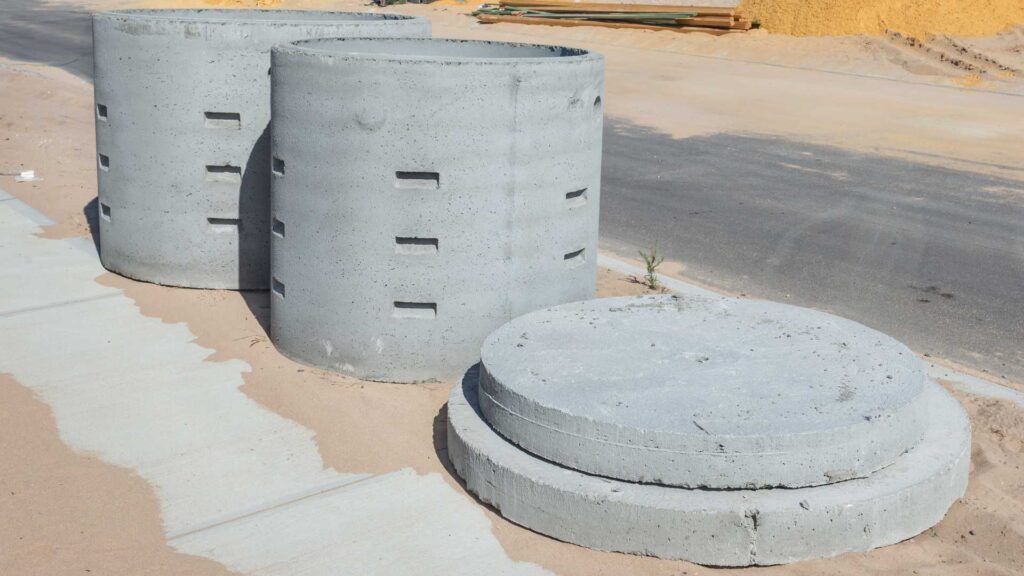
While the upfront cost of professional soakwell installation might be higher than a DIY approach, the long-term savings can be significant. Properly installed soakwells require less maintenance and are less likely to need costly repairs or replacements. Furthermore, they protect the structural integrity of your property by preventing water damage, ultimately saving homeowners money in the long run.
The Process Of Professional Installation
The process of professional soakwell installation is thorough and tailored to each property’s specific needs. It typically involves:
- Site Assessment: Professionals conduct a detailed evaluation of the property to determine the optimal location and size for the soakwell.
- Design and Planning: Based on the assessment, a customised soakwell system is designed to meet the property’s specific requirements.
- Installation: Utilising specialised equipment and techniques, the soakwell is installed with minimal disruption to the property.
- Quality Assurance: After installation, professionals conduct thorough testing to ensure the system operates effectively and meets all regulatory standards.
Factors To Consider When Deciding Between DIY And Professional Soakwell Installation
When managing stormwater on your property, installing a soakwell is a proactive step towards protecting your property from water damage and contributing to environmental sustainability. The decision between embarking on a DIY project or hiring professionals for soakwell installation involves several considerations. Experience hassle-free drainage with our professional soakwell services designed for Perth conditions.
Expertise And Experience
DIY Consideration
- Skill Level: Assess your comfort and experience with similar projects. DIY soakwell installation requires understanding excavation, plumbing connections, and potentially complex landscape navigation.
- Research: Extensive preparation and research are essential. Mistakes can lead to ineffective water drainage or even property damage.
Professional Advantage
- Specialised Knowledge: Professionals possess the expertise to assess soil type, property layout, and optimal soakwell size and placement, ensuring effective stormwater management.
- Experience: With years of installations, professionals can anticipate and navigate challenges, ensuring a durable and efficient setup.
Cost Implications
Diy Savings
- Material Costs: Opting for DIY generally means paying only for materials, potentially saving labour costs.
- Budget Control: You have direct control over material choices, allowing cost adjustments as needed.
Professional Investment
- Comprehensive Service: The initial higher cost includes expert assessment, installation, and often a warranty, ensuring value through longevity and reliability.
- Unexpected Expenses: Professionals can mitigate the risk of unforeseen issues that could escalate costs, a common pitfall in DIY projects.
Time And Labor
Diy Time
- Personal Time Investment: Consider the value of your time. A DIY soakwell project can be time-consuming, especially without prior experience.
Professional Efficiency
- Quick and Efficient: Thanks to their expertise and access to specialised equipment, professional teams can complete the job in a fraction of the time it might take an individual.
Compliance And Regulations
Diy Risk
- Regulatory Knowledge: Homeowners must navigate local building codes and regulations, ensuring the installation complies with all legal requirements.
Professional Assurance
- Regulatory Compliance: Professionals are familiar with the legal landscape surrounding soakwell installations and can ensure your project adheres to all local regulations and standards.
Long-Term Effectiveness And Maintenance
Diy Maintenance
- Upkeep: DIY installations may require frequent maintenance, especially if you need more experience. Incorrect installations can lead to long-term issues.
Professional Reliability
- Quality Assurance: Professional installations often come with guarantees of artistry and materials, providing peace of mind and long-term reliability.
Conclusion
Soakwells are very important for managing stormwater on land and keeping it from drowning and pooling. They are very important for building and maintaining properties because they offer long-lasting, low-cost options for keeping properties safe and taking care of the environment. Concrete soakwells are known for being long-lasting, so they can do their job for decades without needing to be fixed or replaced.
Soakwells are flexible and can be used on a lot of different types of properties, from small home lots to large business complexes. They help the environment by handling stormwater on-site and letting it recharge groundwater. This makes city drainage systems less busy and reduces pollution in nearby rivers.
Professionalism is needed for a good installation because you need to know how to plan and install effective stormwater management systems. Property owners can rest easy knowing that their system will keep working well over the years with regular repair by pros.
For people who like doing things by hand, installing a soakwell on their own can be a satisfying job that makes their home more resistant to bad weather. Some important things to think about are carefully planning, picking the right materials, knowing the rules in your area, and evaluating the spot.
In conclusion, soakwells are an important part of handling stormwater on land because they are long-lasting, cost-effective, and help the environment stay healthy.
Installing soakwells is an important part of managing property because they make sure that water moves around efficiently and protects against damage. By doing projects yourself, you can protect your home from water damage and help the environment at the same time. Professional soakwell repair, on the other hand, gives knowledge and adherence to local rules, making sure that the system works well and meets all requirements.
A skilled installation method includes evaluating the site, designing and planning, installing, and making sure the work is done well. Professionals have years of experience and can predict problems, so they can make sure that the setup lasts and works well. Do-it-yourself jobs can save you money on materials and help you stick to your budget, but professional installations usually come with guarantees and offer full service.
Expertise and experience, cost, time and labour investment, efficiency, compliance and laws, long-term effectiveness and upkeep, and professional reliability are some things to think about when deciding whether to do your soakwell construction or hire a professional. Some do-it-yourself projects may need to be fixed up regularly, but professional setups often come with promises of craftsmanship and materials, giving you peace of mind and long-term dependability.
In conclusion, both do-it-yourself and skilled soakwell installation are necessary to keep a home healthy and eco-friendly. Professional solutions get better results and can save you a lot of money in the long run, even though do-it-yourself jobs may need more planning and knowledge.
Content Summary
- Soakwells are critical for managing stormwater and preventing drainage issues on properties.
- The decision to install a soakwell can lead to a dilemma: DIY or professional installation?
- This guide offers a comprehensive overview of what’s involved in soakwell installation and maintenance.
- It addresses considerations like cost, time, difficulty, and the satisfaction of completing a project.
- Soakwells play a crucial role in both residential and commercial property development.
- They are essential for environmental responsibility and structural integrity.
- Concrete soakwells are praised for their effectiveness in managing large volumes of water.
- Their durability is unmatched, offering a long-term solution with minimal maintenance.
- Customisable designs allow soakwells to meet the specific needs of any property.
- They contribute to environmental sustainability by supporting the natural water cycle.
- Professional expertise is recommended for designing and installing effective soakwells.
- DIY installations can offer personal satisfaction and potential cost savings.
- Preparation is crucial, starting with a thorough understanding of the property’s layout and drainage needs.
- Choosing the right materials is vital for ensuring the soakwell’s durability and efficiency.
- It’s important to be aware of local regulations and codes for stormwater management.
- Soil type, drainage patterns, and proximity to structures must be considered during site assessment.
- Excavation requires caution to avoid damaging underground utilities and ensuring compliance with permits.
- Assembling the soakwell correctly is essential for its functionality and longevity.
- The installation process includes connecting the soakwell to downpipes and ensuring proper placement.
- Backfilling with the appropriate materials is crucial for effective drainage.
- Restoring the landscape and testing the water flow are final steps to ensure a successful installation.
- DIY soakwell installation reflects a proactive approach to property maintenance.
- Professional installation ensures the efficiency and compliance of the soakwell system.
- Experts bring valuable knowledge and experience to the installation process.
- Compliance with local regulations is easier to achieve with professional help.
- The long-term savings and property protection offered by professionals often outweigh the initial cost.
- The professional installation process is thorough and customised to each property’s needs.
- Choosing between DIY and professional installation involves assessing expertise, cost, and time.
- Skill level and comfort with excavation and plumbing are important for DIY projects.
- Professional installers offer specialised knowledge and experience for optimal stormwater management.
- DIY can save on labour costs but requires a significant investment of personal time.
- Professionals complete the job more quickly and efficiently due to their expertise.
- Navigating regulatory requirements is a major consideration in DIY projects.
- Professional services ensure compliance with all local regulations and standards.
- DIY installations may require more frequent maintenance and can lead to long-term issues.
- Professional installations come with guarantees of workmanship and long-term reliability.
- The guide aims to help property owners make informed decisions about soakwell installation.
- Understanding the intricate process of installation can guide whether to undertake a DIY project.
- The effectiveness of a soakwell depends on proper installation and maintenance, whether DIY or professional.
- The choice between DIY and professional installation affects the project’s overall success and efficiency.
- Factors like the complexity of the property’s drainage needs and the owner’s skills play into this decision.
- The benefits of soakwells extend beyond water management to environmental conservation.
- Concrete soakwells are highlighted for their superior performance and sustainability.
- The article underscores the importance of planning and preparation in soakwell installation.
- Expertise in stormwater management is crucial for ensuring the soakwell’s effectiveness.
- The appeal of DIY installation lies in the personal fulfilment and learning experience it provides.
- Professional installation is emphasised for its adherence to standards and long-term benefits.
- The article provides a balanced view, helping readers weigh the pros and cons of each option.
- It serves as a valuable resource for anyone considering a soakwell installation project.
- Ultimately, the decision between DIY and professional installation should be based on a thorough evaluation of all factors mentioned.
Frequently Asked Questions About Soakwells
The decision largely depends on key factors:
Your experience with similar projects.
The complexity of your property’s drainage needs.
Your budget.
The amount of time you can dedicate to the project.
DIY might be a good choice if you have a background in construction or landscaping and the project is relatively straightforward. However, professional services offer expertise and efficiency for complex installations or if you need clarification on local regulations.
Opting for a DIY installation can significantly reduce labour costs, a substantial part of the total expense when hiring professionals. However, it’s important to factor in materials costs, equipment rental (if needed), and any potential expenses arising from mistakes. While DIY can be more budget-friendly, the savings should be weighed against the risk of potentially higher costs due to errors or unforeseen complications.
Yes, many regions have specific regulations regarding stormwater management, including permits for soakwell installations. These regulations can dictate the size, location, and type of soakwell you can install. Please comply to avoid fines or being required to redo the work. Professional installers are typically familiar with these regulations and can ensure that your project complies with local codes.
The primary risks include improper installation, which can lead to ineffective drainage, damage to your property, or even legal issues if the installation doesn’t meet local regulations. There’s also the risk of personal injury during the excavation and installation. These risks can be mitigated by thorough planning, proper safety practices, and seeking advice when needed.
With the right skills, knowledge, and attention to detail, you can independently achieve a high-quality soakwell installation. However, professionals bring years of experience, specialised tools, and an artistry guarantee. If you’re new to projects of this scale or complexity, achieving professional-level quality might take a lot of work. It’s important to realistically assess your capabilities and the project’s demands before deciding.


